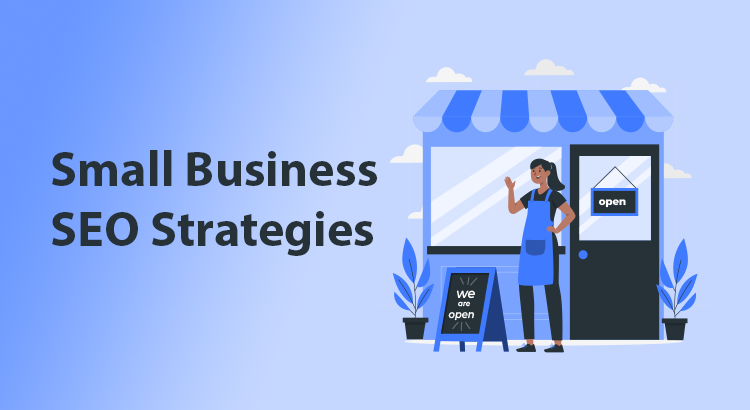Small business SEO strategies are crucial for improving your online presence and driving relevant traffic. Working with the best SEO companies can help boost visibility in search engines, attracting the right audience. This article will explore effective methods and tips to enhance your website’s performance and online reach. You’ll discover how small business owners can optimize their websites for better results.
What is Small Business SEO?
It involves optimizing your website and overall online presence to increase visibility on search engines like Google. The goal is to attract potential customers who are actively searching for products or services your business offers.
This strategy focuses on targeting specific keywords and improving website performance, making it a highly effective marketing tool for smaller companies. A significant aspect of this optimization process for local businesses is prioritizing local search visibility.
Benefits of SEO for Small Business
Implementing search engine optimization can offer a range of benefits for small businesses, such as:
1. Increased Awareness
Improved visibility in search engine results pages (SERPs) means more people discover your company. As a result, you can build a stronger presence, ultimately leading to increased brand recognition and steady growth over time.
2. Increased Traffic
With a more optimized website, you can attract a higher volume of visitors, driving more prospective customers to your site. This creates more opportunities to convert visitors into loyal, paying clients, boosting revenue.
3. Connecting with Your Target Audience
Website ranking services allow you to engage with potential customers early in their decision-making process. By providing helpful, well-targeted content, you build trust, guiding prospects through their buying journey effectively.
4. Competitive Advantage
By ranking higher in SERPs, you gain a competitive edge over others in your industry. Better visibility lets you compete more successfully with larger companies, attracting new customers and enhancing your market position.
5. 24/7 Availability
An optimized online presence means your firm remains visible to prospective customers at all hours. This constant accessibility allows your company to offer solutions whenever needed, ensuring you’re always available to meet customer demands.
6. Cost Efficiency
Unlike traditional marketing methods that require a significant upfront investment, website optimization is a more cost-effective approach. By focusing on time and effort, small businesses can achieve long-term results without the high costs of ads or promotions.
Small Business SEO Tips
By following these tactics, you can enhance your online presence, reach a broader audience, and boost conversions.
1. Set Up Google Analytics and Google Search Console
Google Analytics and Google Search Console are essential for tracking website performance and monitoring your SEO efforts. These tools provide valuable data, such as traffic metrics and user engagement, which are crucial for understanding how well your site is performing in SERPs.
2. Set Up Your Google Business Profile
A Google Business Profile is essential for businesses serving specific geographic areas. It helps improve local search visibility, enabling potential customers to find your firm easily. Additionally, managing your profile and responding to reviews can improve your rankings on Google Maps and local search results.
3. Conduct Thorough Keyword Research
Keyword research is foundational to any website optimization plan. By identifying the words and phrases your target audience uses to search, you can optimize your content and website structure to ensure that Google and potential customers can easily find your business online.
4. Analyze SERP Competitors
By reviewing your competitors on the SERPs, you can uncover additional keywords and learn about the types of content that resonate with your audience. This insight will help you tailor your SEO efforts and improve your visibility.
5. Optimize Your Site Structure
A clear, organized site structure is crucial for both Google and users. It ensures that visitors can navigate your website easily, and Google can crawl and index your pages effectively. Keep your site architecture logical and user-friendly for the best results.
6. Implement Schema Markup
Schema markup helps Google understand the context of your content, which can lead to improved rankings. It can also enable rich results, such as enhanced listings in the SERPs. Implementing schema can be done with simple plugins or code adjustments.
7. Optimize On-Page Elements
On-page optimization, focusing on key elements like titles, meta descriptions, and headers, offers quick wins for improving website visibility and engagement. These adjustments can significantly impact how your pages rank and perform in SERPs.
Titles
Titles, also known as title tags or meta titles, are key elements that represent the main heading of a page. They appear in SERPs and influence click-through rates. Optimizing them with relevant keywords can improve ranking. Titles should be clear, concise, and compelling, as they are the first thing users see.
Best practices:
- Keep titles between 55-60 characters
- Use target keywords effectively
- Clearly describe the page content
- Make them enticing to increase clicks
- Optionally, include your business name or brand
- Keep the title simple and to the point
Meta Descriptions
Meta descriptions briefly explain the content of your page to both users and Google. They appear below the title in SERPs and can directly influence whether users click through to your website.
Best practices:
- Keep them 140-160 characters long
- Include one or two keywords
- Add a relevant call to action if necessary
- Ensure they accurately summarize the content
- Aim to evoke an emotional response to encourage clicks
Headers
Headers structure your content, making it easier for both users and Google to understand. They also break up content into digestible sections, improving readability. Use headings like H1 for the main title, and H2 to H6 for subheadings.
Best practices:
- Use H1 for the primary heading of each page
- Include keywords naturally in headers
- Use H2 to H6 for logical content organization
- Write headers that clearly summarize the content in each section
- Focus on clarity and relevance for the audience
8. Create Relevant Content to Connect with Customers
Content creation is essential for site optimization. By providing valuable, keyword-targeted content that addresses your audience’s needs, you can attract visitors and build trust with potential customers. This will help convert them into long-term clients.
9. Fix Basic SEO Issues
Technical issues can significantly impact your website’s ranking and visibility. Addressing these common problems is crucial for improving performance in SERPs.
Common issues to fix:
- Pages that Google can’t find or crawl
- Broken links that prevent users from navigating your site
- Slow loading times that harm both user experience and ranking
- Errors in your sitemap that could affect how Google indexes your content
- Duplicate content that can confuse search engines
- Web security vulnerabilities that affect trustworthiness
- Problems with schema implementation that hinder rich results
- And more
These issues can be challenging to diagnose and fix, especially for businesses with limited resources. Regular checks and fixes will ensure your site stays optimized for both search engines and users.
10. Build Relevant Online Listings for Your Business
Backlinks are an important ranking factor for site optimization. One effective way to build them is by submitting your business to relevant directories. These links act as endorsements from other websites, improving your site’s credibility and search engine rankings.
11. Request Links from Suppliers and Business Associations
Building relationships with suppliers and business associations can significantly boost your website’s visibility. By asking them to feature a link to your website on their platforms, you not only enhance your credibility but also gain valuable backlinks that contribute to higher search engine rankings. These links serve as endorsements from reputable sources within your industry, strengthening your website’s authority.
12. Monitor Your Local Listings
Ensure that your business information (name, address, and phone number) is consistent across all online platforms. Inaccurate or inconsistent listings can confuse potential customers and negatively affect your local SEO efforts, leading to lower rankings.
13. Encourage and Respond to Reviews
Customer reviews are a powerful tool for enhancing your online reputation and influencing local rankings. Encourage satisfied customers to leave positive reviews, and ensure you respond to all feedback, showing appreciation for positive comments and addressing concerns. Engaging with reviews helps build trust and can positively impact your search rankings.
14. Track Your Rankings
Regularly tracking your website’s keyword rankings is vital for understanding the effectiveness of your website optimization efforts. Use tools like Google Search Console to monitor changes in rankings and traffic. Tracking your progress enables you to make data-driven decisions and refine your strategies to continue improving your website’s visibility in SERPs.
Conclusion
To successfully optimize your online presence, it’s important to implement effective techniques that enhance visibility and attract potential customers. By focusing on core aspects like keyword research, site optimization, and maintaining an active presence through local listings and customer reviews, your website can stand out in SERPs. Consistency is key to seeing long-term improvements in your rankings and overall performance. By continuously evaluating and adjusting your approach, you’ll strengthen your business’s digital footprint and drive better results over time.


